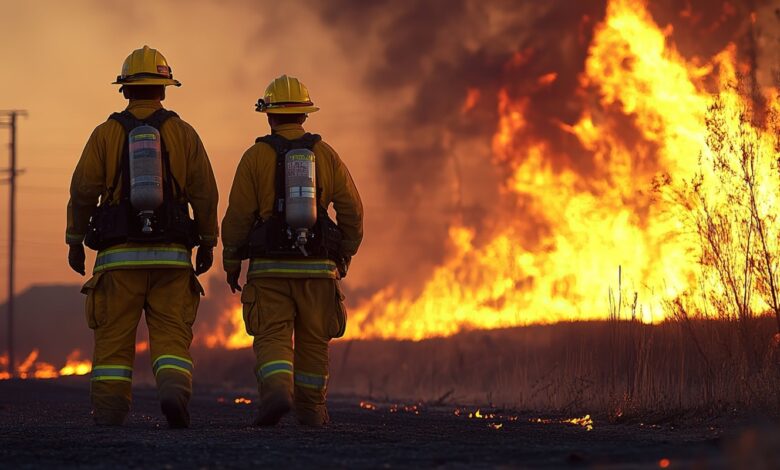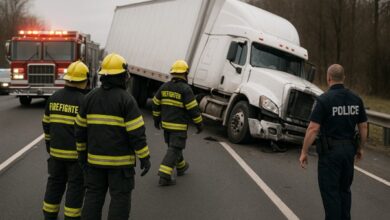
Larry Zeitzmann of Washington MO has spent more than 30 years managing fire incidents that required coordination across multiple agencies, departments, and jurisdictions. From local structure fires with neighboring volunteer departments to large-scale weather emergencies requiring fire, EMS, public works, and law enforcement cooperation, Larry Zeitzmann has seen what works—and what absolutely doesn’t. In his time as Fire Chief of Glendale and Emergency Management Director for both Glendale and Warson Woods, he built a practical system for unified operations. He wasn’t concerned with overcomplicated theory. For Larry Zeitzmann, success in multi-agency response came down to preparation, clarity, and the ability to lead without letting organizational lines get in the way of outcomes.
When Everyone Shows Up, But No One’s in Charge with Larry Zeitzmann
One of the most common breakdowns Larry Zeitzmann encountered in emergency response was the assumption that someone else had already taken command. In many mutual-aid responses—especially in fast-moving structure fire situations—crews would arrive on scene and immediately begin working based on their own department’s routines, without a shared strategy. This fractured response caused overlapping suppression efforts, neglected safety zones, conflicting resource deployment, and at times, complete radio confusion.
Larry Zeitzmann of Washington MO addressed this early in his leadership by pushing for the automatic establishment of unified command anytime more than one department was present. It wasn’t about ego or rank—it was about clarity. He trained officers to default to ICS (Incident Command System) language and confirm their place in the structure immediately upon arrival. Unified command, when applied correctly, gave everyone a shared objective and allowed each agency to maintain internal autonomy while working toward the same operational goals.
Without this structure, departments—no matter how professional—defaulted to their own instincts and protocols. Hose lines crossed, search assignments were duplicated, staging became congested, and personnel safety was compromised. Zeitzmann took these breakdowns seriously. After-action reviews under his leadership weren’t designed to assign blame but to identify exactly when and why communication or coordination failed—and what to do differently next time.
ICS as a Common Operating System with Larry Zeitzmann
ICS was never optional for Larry Zeitzmann. He believed it was the only reliable tool that gave diverse agencies a shared language and operational approach during high-stakes emergencies. Departments often resist ICS implementation, seeing it as cumbersome, theoretical, or bureaucratic. But Larry Zeitzmann of Washington MO implemented ICS as a streamlined, scalable system—not just for major disasters, but for routine mutual aid calls.
His philosophy was simple: if you can’t communicate and coordinate at the small scale, you won’t succeed at the large scale. ICS wasn’t just a binder on a shelf—it was built into daily operations. Fire drills used ICS. MVA (motor vehicle accident) scenes used ICS. Structure fires—no matter the size—used ICS.
When multiple fire departments responded to a large incident, Zeitzmann ensured that initial briefings clarified command structure, communication channels, and task division. He didn’t assign roles based on seniority—he assigned them based on capabilities and familiarity with the area or operation type. If a firefighter from a neighboring town had more experience managing brush fires, that person might run that division.
Public works was looped in early, EMS knew their triage locations, and law enforcement had clear perimeters. Everyone operated under one plan. That efficiency wasn’t accidental—it was the result of consistency, trust, and a shared operating system.
What Breaks Down in Multi-Agency Responses
Even with a command structure in place, problems still occurred. According to Larry Zeitzmann, the most common points of failure fell into three categories: communication, equipment, and culture.
First, radio communication quickly became a bottleneck. Departments without shared frequencies or compatible radio systems often found themselves in the dark—literally. Critical updates were missed. Commanders couldn’t reach teams. Crews ended up operating blind in high-risk environments. Zeitzmann made it a priority to establish regional radio interoperability agreements and train for their use. This meant borrowing radios, investing in shared channels, and doing the hard, bureaucratic work of creating a cohesive plan across departments.
Second, equipment incompatibility was a persistent headache. Hose couplings that didn’t match, incompatible foam systems, different ladder mounts—these seemingly small differences slowed down operations when seconds mattered. Larry Zeitzmann of Washington MO tackled this by creating equipment reference charts and hosting inter-departmental compatibility drills. Instead of trying to standardize every department’s gear, he focused on education: know what your neighbor uses, and practice how to connect.
The third breakdown was cultural. Different agencies often had different approaches to fireground tactics. Some were aggressive interior attack departments, others favored a more cautious, defensive strategy. This led to tension, confusion, and in the worst cases, stalled decision-making. Zeitzmann’s answer: define the strategy fast, communicate it clearly, and revisit it frequently during the incident to make sure everyone remained aligned. Strategy needed to be declared early and reinforced throughout the operation.
Leadership Without Borders with Larry Zeitzmann of Washington MO
For Larry Zeitzmann of Washington MO, the key to managing multi-agency incidents wasn’t control—it was clarity. Leading a response didn’t mean telling everyone what to do; it meant ensuring every agency knew where to plug in, how to communicate, and what outcome they were working toward.
He emphasized collaboration over command, strategy over instinct, and system over personality. His approach proved that when agencies prepare together, train together, and communicate openly, unified emergency response becomes not only possible—but powerful.



